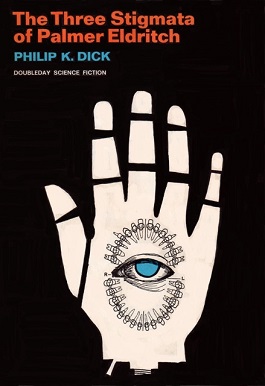
The Three Stigmata of Palmer Eldritch is a 1964 science fiction novel by American writer Philip K. Dick. It was nominated for the Nebula Award for Best Novel in 1965. Like many of Dick's novels, it utilizes an array of science fiction concepts and explores the ambiguous slippage between reality and unreality. It is one of Dick's first works to explore religious themes.
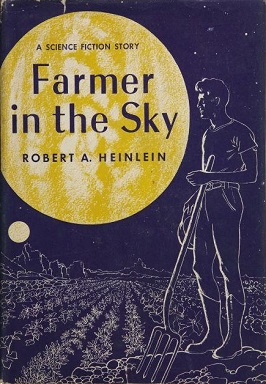
Farmer In The Sky is a 1950 science fiction novel by American writer Robert A. Heinlein about a teenaged boy who emigrates with his family to Jupiter's moon Ganymede, which is in the process of being terraformed. Among Heinlein's juveniles, a condensed version of the novel was published in serial form in Boys' Life magazine, under the title "Satellite Scout". The novel was awarded a Retro Hugo in 2001.
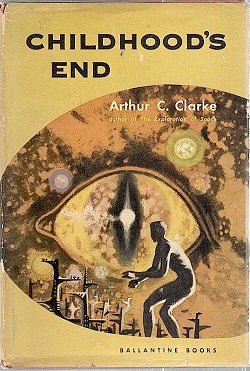
Childhood's End is a 1953 science fiction novel by the British author Arthur C. Clarke. The story follows the peaceful alien invasion of Earth by the mysterious Overlords, whose arrival begins decades of apparent utopia under indirect alien rule, at the cost of human identity and culture.

Alien invasion or space invasion is a common feature in science fiction stories and film, in which extraterrestrial lifeforms invade the Earth to exterminate and supplant human life, enslave it, harvest people for food, steal the planet's resources, or destroy the planet altogether. It can be considered as a science-fiction subgenre of the invasion literature, expanded by H. G. Wells's seminal alien invasion novel The War of the Worlds.

Pebble in the Sky is a science fiction novel by American writer Isaac Asimov, published in 1950. This work is his first novel — parts of the Foundation series had appeared from 1942 onwards in magazines, but Foundation was not published in book form until 1951. The original Foundation books are also a string of linked episodes, whereas this is a complete story involving a single group of characters.

Zenna Chlarson Henderson was an American elementary school teacher and science fiction and fantasy author. Her first story was published in The Magazine of Fantasy & Science Fiction in 1951. Her work is cited as pre-feminist, often featuring middle-aged women, children, and their relationships, but with stereotyped gender roles. Many of her stories center around humanoid aliens called "The People", who have special powers. Henderson was nominated for a Hugo Award in 1959 for her novelette Captivity. Science fiction authors Lois McMaster Bujold, Orson Scott Card, Connie Willis, Dale Bailey, and Kathy Tyers have cited her as an influence on their work.
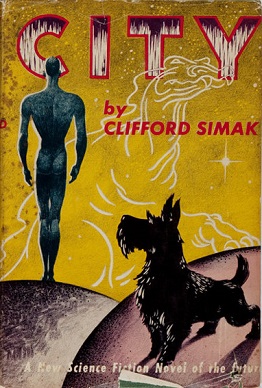
City is a 1952 science fiction fix-up novel by American writer Clifford D. Simak. The original version consists of eight linked short stories, all originally published in Astounding Science Fiction under the editorship of John W. Campbell between 1944 and 1951, along with brief "notes" on each of the stories. These notes were specially written for the book, and serve as a bridging story of their own. The book was reprinted as ACE #D-283 in 1958, cover illustration by Ed Valigursky.

Edwin Charles Tubb was a British writer of science fiction, fantasy and western novels. The author of over 140 novels and 230 short stories and novellas, Tubb is best known for The Dumarest Saga, an epic science-fiction saga set in the far future. Michael Moorcock wrote, "His reputation for fast-moving and colourful SF writing is unmatched by anyone in Britain."

Against the Fall of Night is a science fiction novel by British writer Arthur C. Clarke. Originally appearing as a novella in the November 1948 issue of the magazine Startling Stories, it was revised and expanded in 1951 and published in book form in 1953 by Gnome Press. It was later expanded and revised again and published in 1956 as The City and the Stars. A later edition includes another of Clarke's early works and is titled The Lion of Comarre and Against the Fall of Night. In 1990, with Clarke's approval, Gregory Benford wrote a sequel titled Beyond the Fall of Night, which continues the story arc of the 1953 novel. It is generally printed with the original novel as a single volume.

The Sands of Mars is a science fiction novel by English writer Arthur C. Clarke. While he was already popular as a short story writer and as a magazine contributor, The Sands of Mars was also a prelude to Clarke's becoming one of the world's foremost writers of science fiction novels. The story was published in 1951, before humans had achieved space flight. It is set principally on the planet Mars, which has been settled by humans and is used essentially as a research establishment. The story setting is that Mars has been surveyed but not fully explored on the ground. The Sands of Mars was Clarke's first published novel.

World of Ptavvs is a science fiction novel by American writer Larry Niven, first published in 1966 and set in his Known Space universe. It was Niven's first published novel and is based on a 1965 magazine story of the same name.
Galaxy novels, sometimes titled Galaxy Science Fiction Novels, were a series of mostly reprint American science fiction novels published between 1950 and 1961.

The Viagens Interplanetarias series is a sequence of science fiction stories by L. Sprague de Camp, begun in the late 1940s and written under the influence of contemporary space opera and sword and planet stories, particularly Edgar Rice Burroughs's Martian novels. Set in the future in the 21st and 22nd centuries, the series is named for the quasi-public Terran agency portrayed as monopolizing interstellar travel, the Brazilian-dominated Viagens Interplanetarias. It is also known as the Krishna series, as the majority of the stories belong to a sequence set on a fictional planet of that name. While de Camp started out as a science fiction writer and his early reputation was based on his short stories in the genre, the Viagens tales represent his only extended science fiction series.
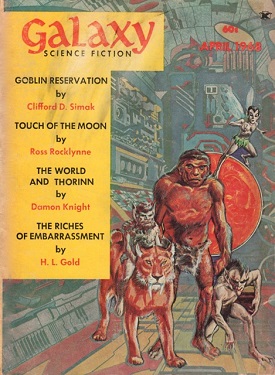
The Goblin Reservation is a 1968 science fiction novel by American writer Clifford D. Simak, featuring an educated Neanderthal, a biomechanical sabertooth tiger, aliens that move about on wheels, a man who time-travels using an unreliable device implanted in his brain, a ghost, trolls, banshees, goblins, a dragon and even Shakespeare himself. The Goblin Reservation was a Hugo Award nominee in 1969 and was originally serialized in Galaxy Science Fiction magazine.

Thorns is a science fiction novel by American author Robert Silverberg, published as a paperback original in 1967, and a Nebula and Hugo Awards nominee.

Collision Course is a science fiction novel by American author Robert Silverberg, first published in hardcover in 1961 by Avalon Books and reprinted in paperback as an Ace Double later that year. Ace reissued it as a stand-alone volume in 1977 and 1982; a Tor paperback appeared in 1988. An Italian translation was also published in 1961, and a German translation later appeared. Silverberg planned the novel as a serial for Astounding Science Fiction, but John W. Campbell rejected the work and Silverberg eventually sold a shorter version to Amazing Stories, where it appeared in 1959.
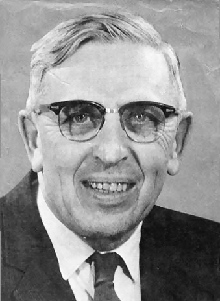
Clifford Donald Simak was an American science fiction writer. He won three Hugo Awards and one Nebula Award. The Science Fiction Writers of America made him its third SFWA Grand Master, and the Horror Writers Association made him one of three inaugural winners of the Bram Stoker Award for Lifetime Achievement. He is associated with the pastoral science fiction subgenre.
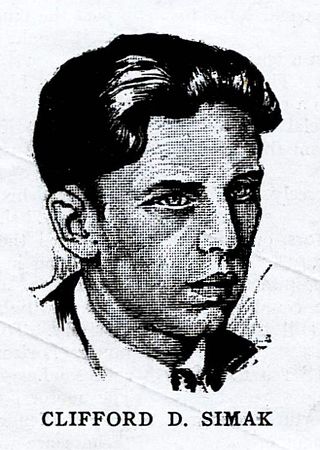
The American science fiction writer Clifford D. Simak was honored by fans with three Hugo Awards and by colleagues with one Nebula Award. The Science Fiction Writers of America made him its third SFWA Grand Master and the Horror Writers Association made him one of three inaugural winners of the Bram Stoker Award for Lifetime Achievement.

Project Pope is a science fiction novel by the American author Clifford Simak, published in 1981 by Ballantine Books. The novel is about a group of robots and humans living on a planet called the End of Nothing. Their mission is to search the universe and other dimensions to seek out true religion and knowledge. They add the information they gather to their Pope, a robotic supercomputer, in order to make an infallible authority of all knowledge and religion. The novel was nominated for both a Hugo Award for Best Novel and a Locus Award for Best SF novel in 1982.

Pastoral science fiction is a subgenre of science fiction which uses bucolic, rural settings, either on Earth or another human-habitable planet or moon and which downplays the role of futuristic technologies. The pioneer is author Clifford Simak, a science fiction Grandmaster who wrote stories in the 1950s and 1960s about rural people who have contact with extraterrestrial beings who hide their alien identity.




















